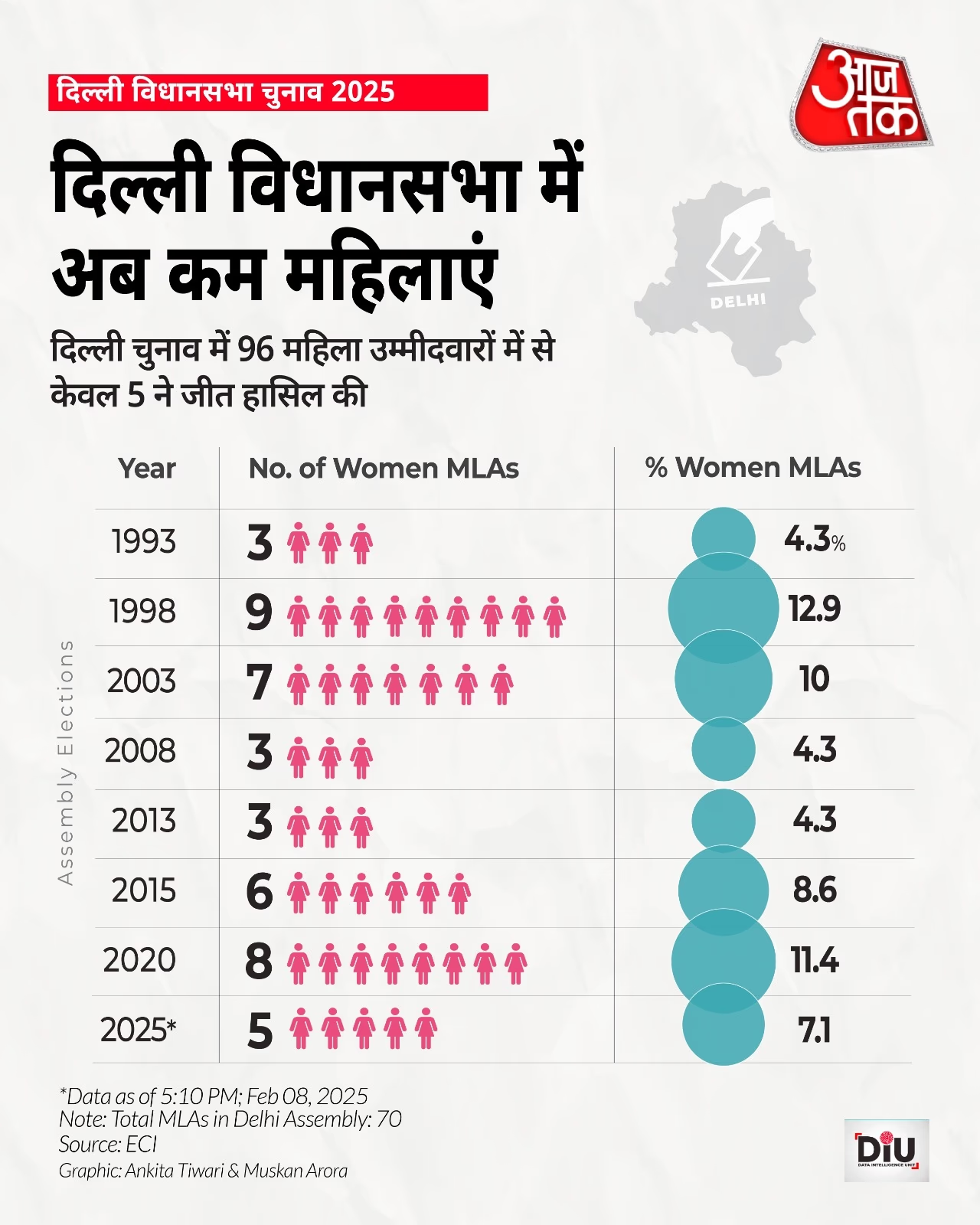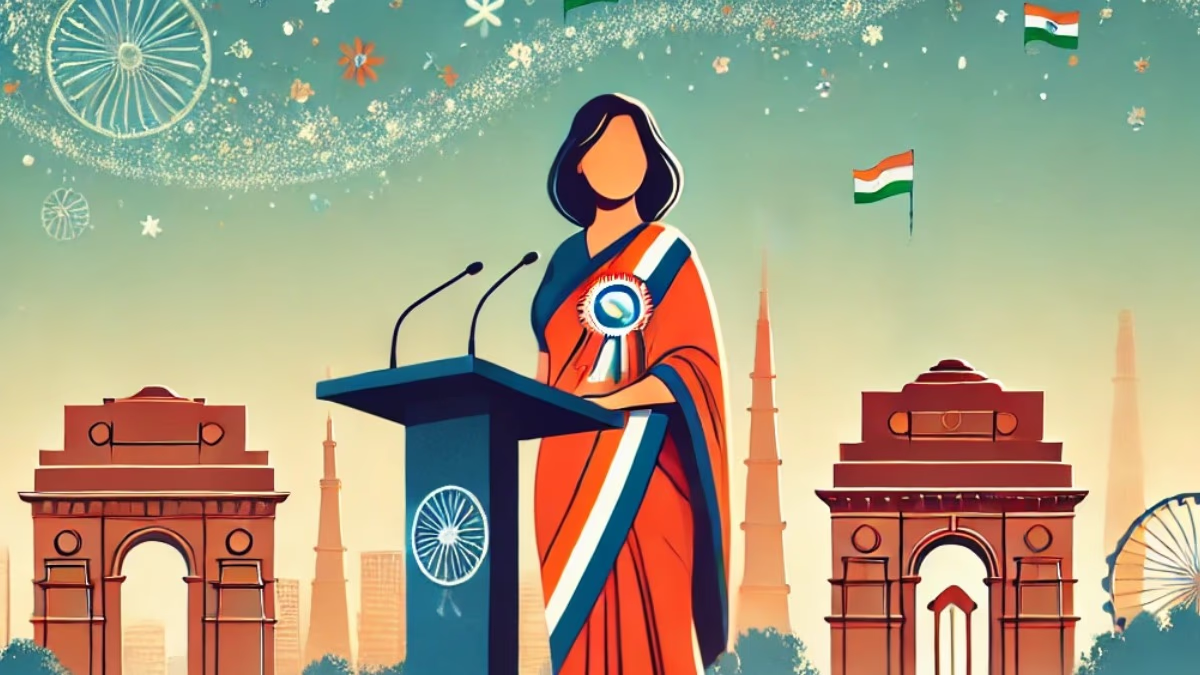The BJP has secured a resounding victory with 48 seats in Delhi, limiting the Aam Aadmi Party to just 22. Out of the eight female candidates fielded by the BJP, four emerged victorious. In contrast, only one female representative from the Aam Aadmi Party, Atishi, won her seat, while Congress failed to open its account. Altogether, merely 5 out of 96 female candidates succeeded in winning a seat in this election.
Over the last three decades, the representation of women in the Delhi Assembly has persistently declined. In 1993, just three women were elected, representing only 4.3% of the entire assembly. In 1998, this number reached its peak with nine women, making up 12.9% of the assembly's total seats. However, in subsequent years, a fluctuating trend was observed.
In 2003, seven women were elected, but this number dropped sharply to just three in 2008 and 2013. The 2015 elections saw a slight rise again, with six women gaining seats, and in 2020, eight women succeeded. An image illustrates this decline, showcasing that despite the presence of female chief ministers in the past, female representation within the assembly remains notably low.

Source: aajtak
Yet, by 2025, the figures diminished further, with just five women managing to win, making up a mere 7.1% of the total seats. Delhi, having been governed by three formidable female chief ministers, including the late Sushma Swaraj from BJP in 1998, and the late Sheila Dikshit from Congress between 1998 and 2013, currently has Atishi from the Aam Aadmi Party as the chief minister. Yet, the capital city's legislative assembly continues to show an underwhelming count of women representatives.




